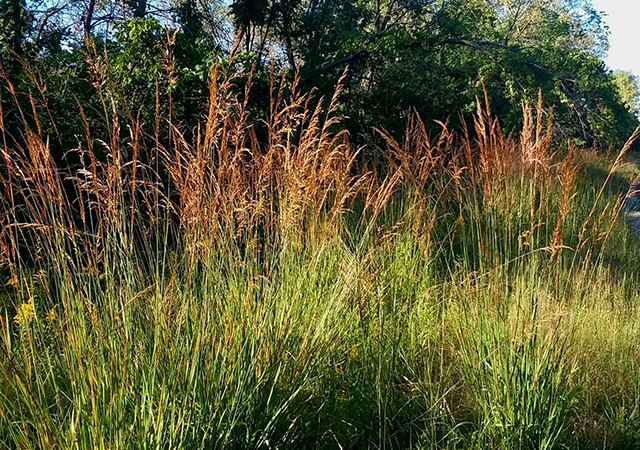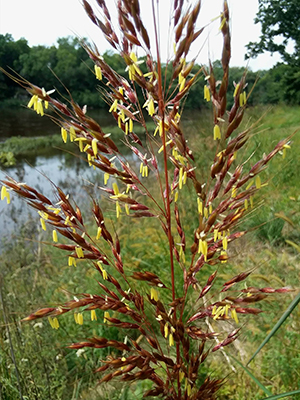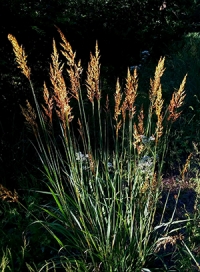 Indian grass- Sorghastrum nutans
Indian grass- Sorghastrum nutans
Indian grass can be a medium to large plant (3-7') depending on soil fertility and moisture levels and is found in full sun or part shade. It is possible that genetically different ecotypes grow on different sites like these plants growing in wet soil along the Milwaukee River vs plants growing on a dry gravelly railroad in Chicago. To keep plants from flopping over, avoid fertilizing or overwatering and plant them close enough together to lean on each other or other prairie plants during heavy winds and storms.


Indian grass supports dozens of species of grasshoppers and other leaf/stem eating insects which are important sources of protein for birds, reptiles, and amphibians. The seeds are also eaten by birds and small mammals. Indian grass was once an important source of food for bison and elk. I highly recommend this grass for home landscapes that have the space.





